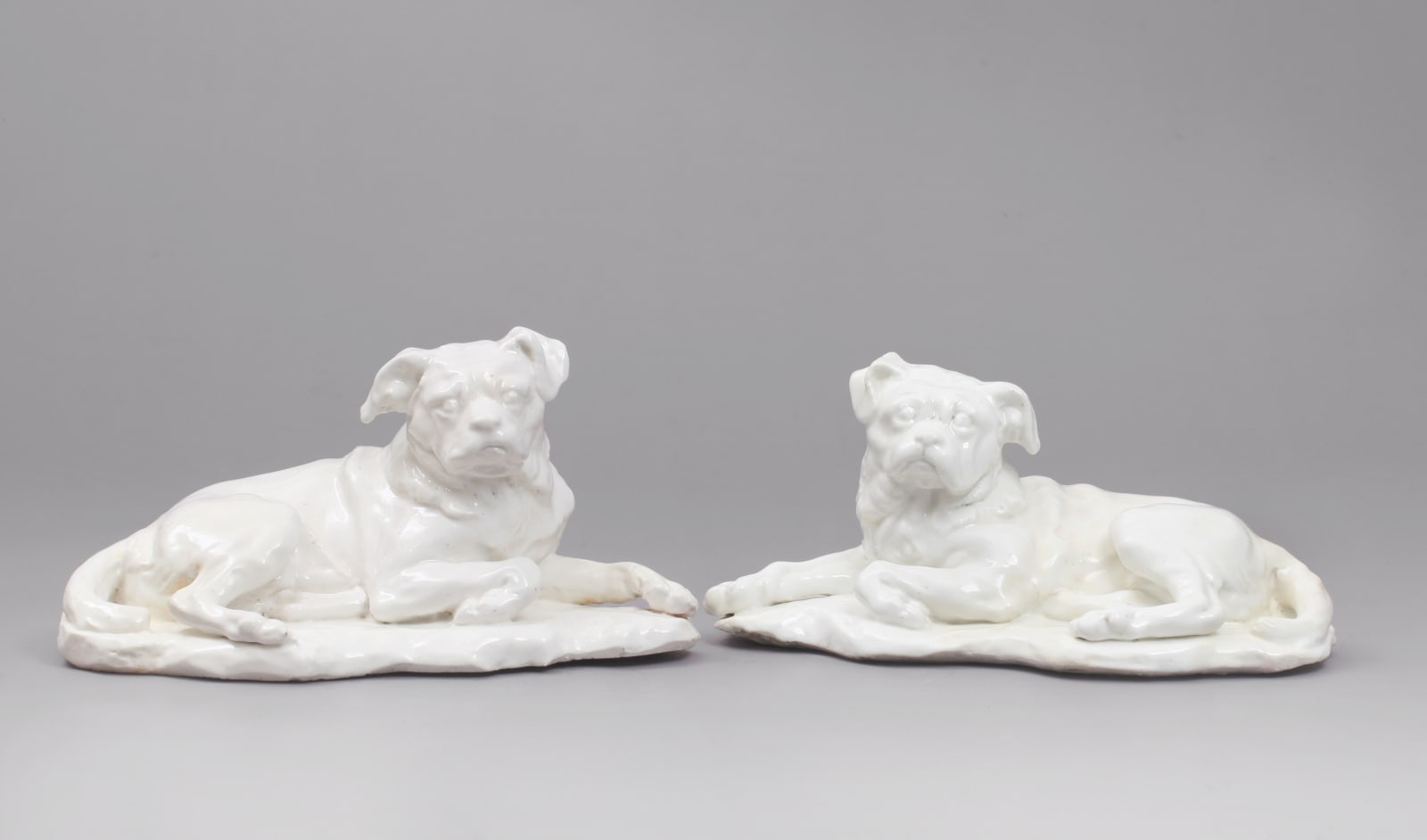
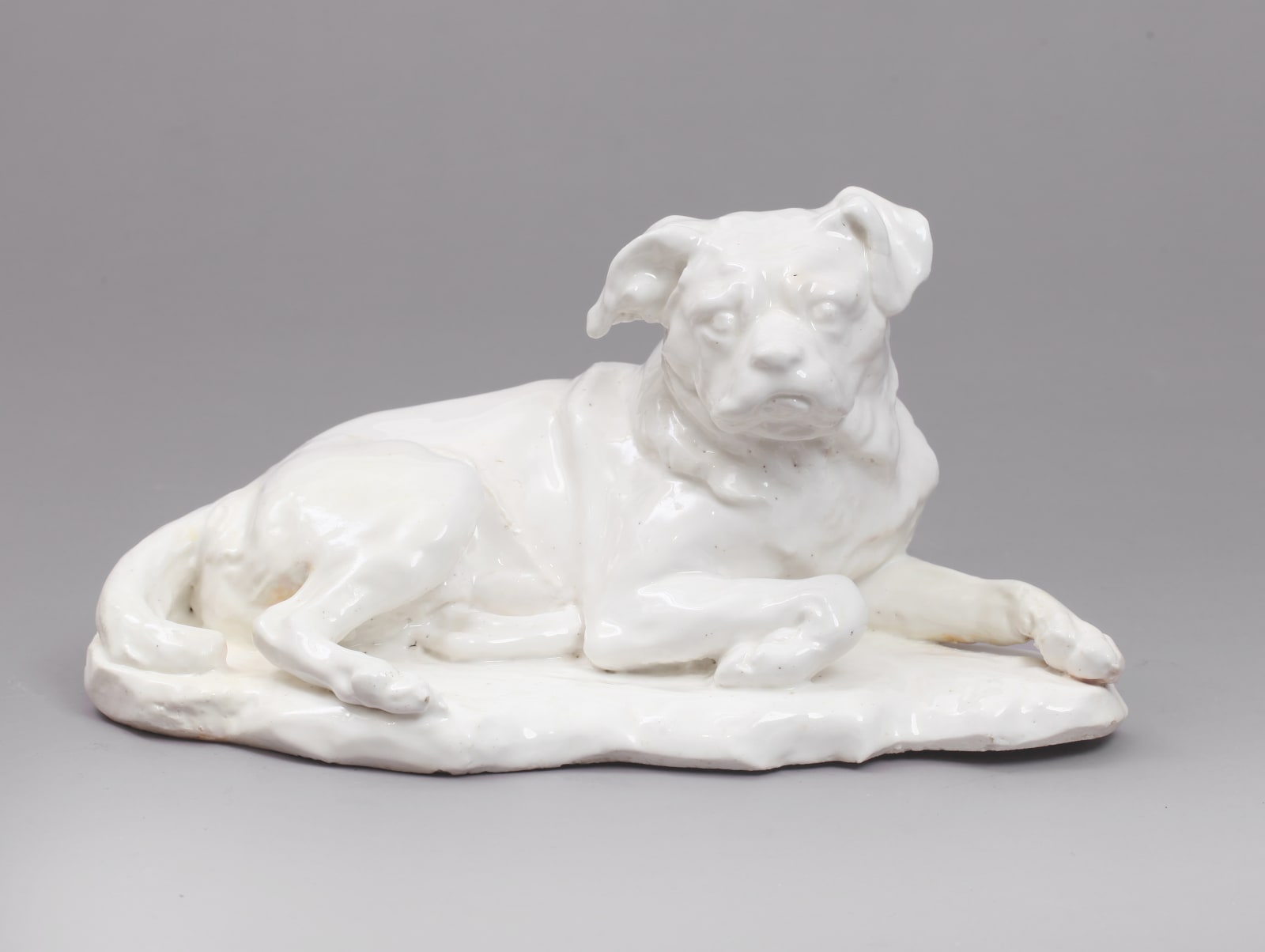
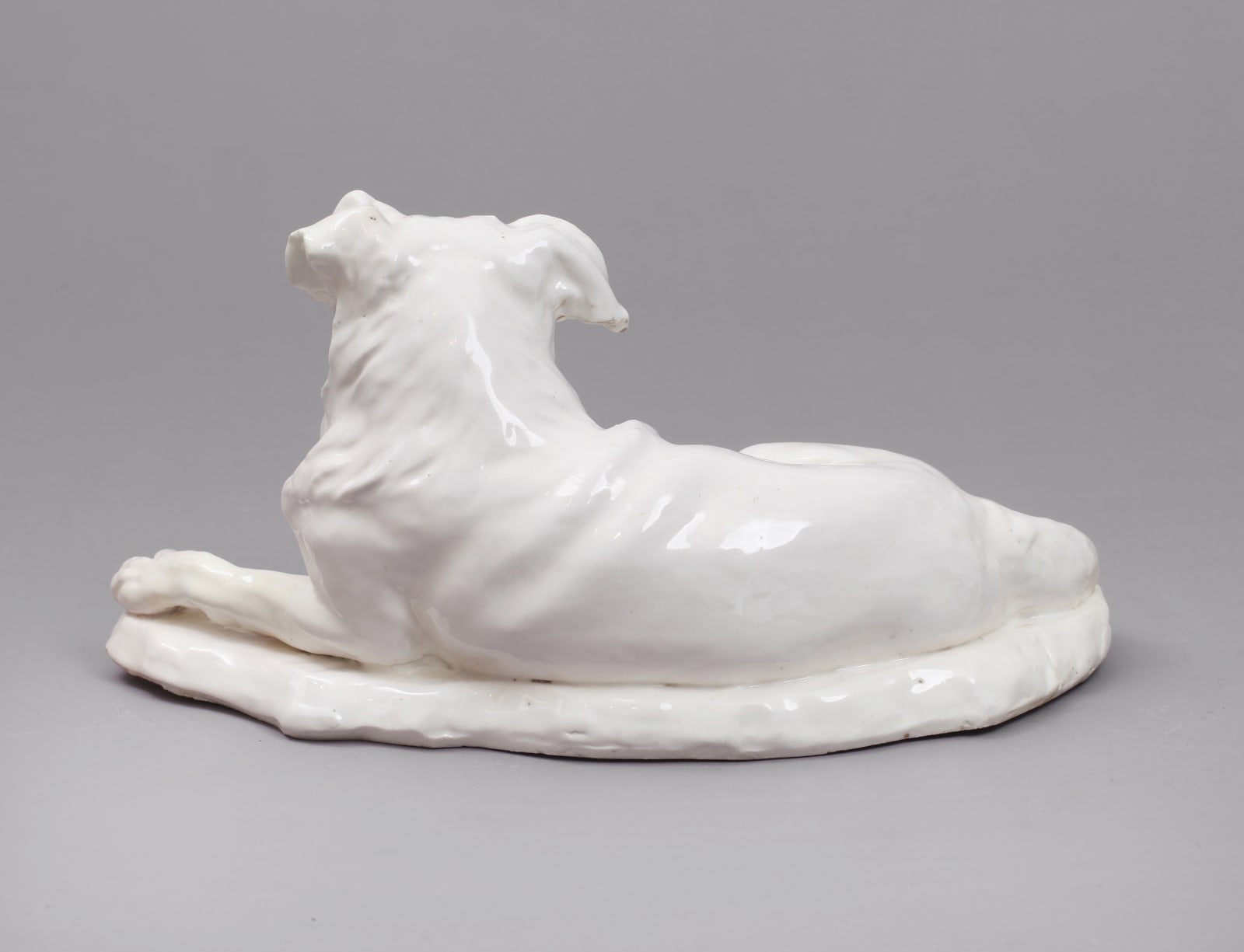
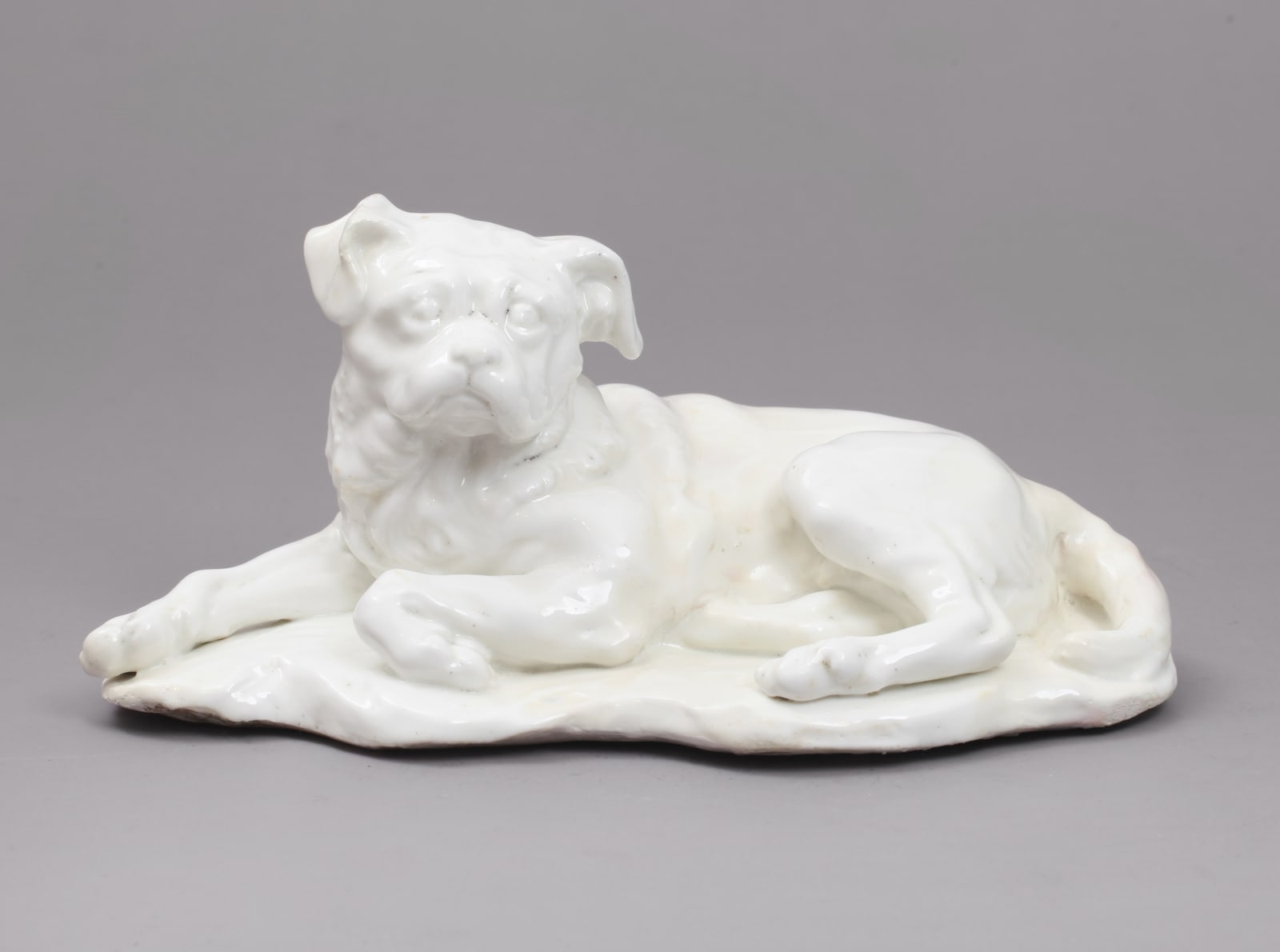
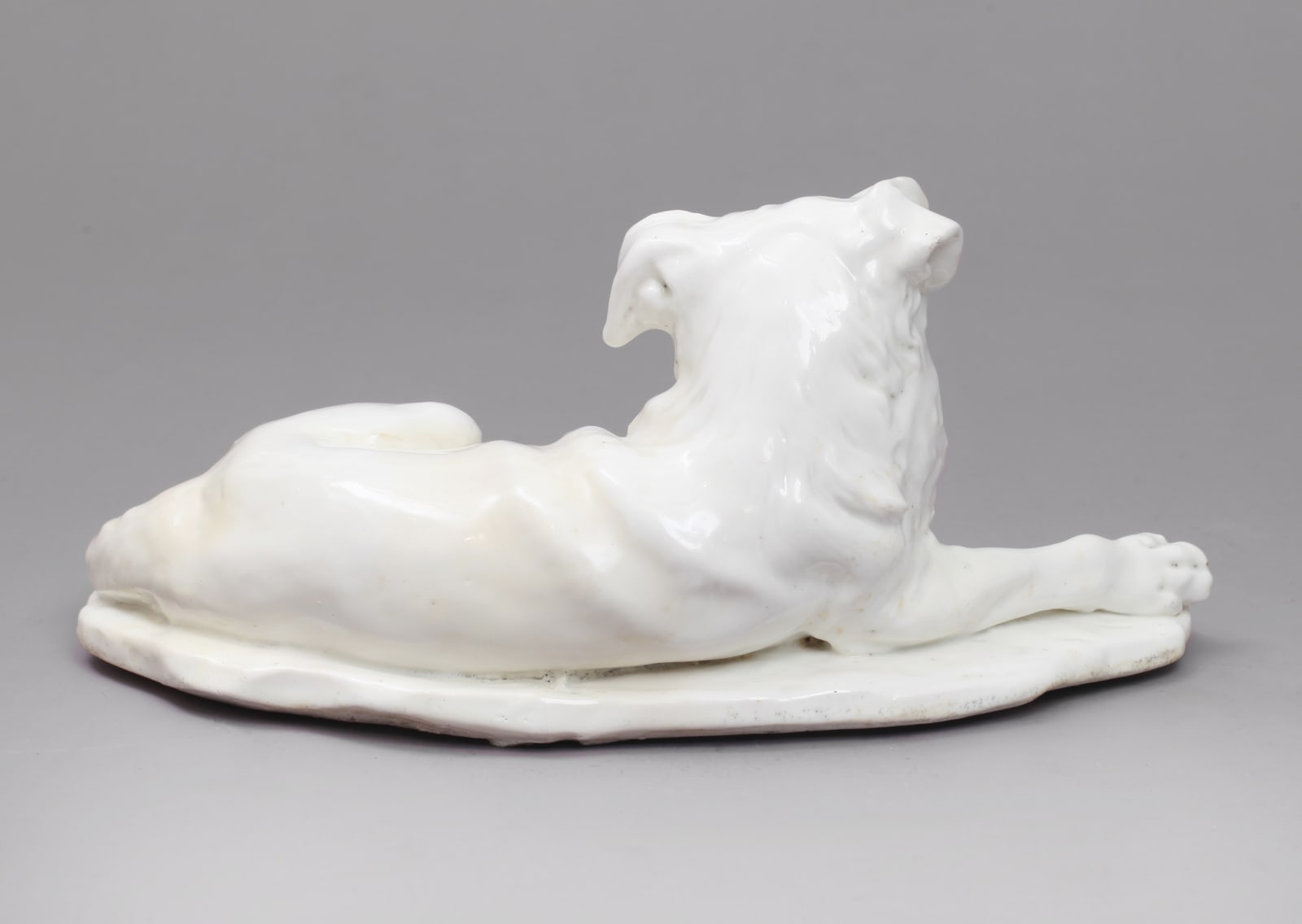
The Important Pair of Chelsea Porcelain Models of Hogarth’s Dog Trump, after the Model by Louis- Francois Roubiliac Of the Incised Triangle Period, Circa 1747-50
Height of each model: 5 ½ ins (14 cms)
Further images
The Important Pair of Chelsea Porcelain Models of Hogarth’s Dog Trump, after the Model by Louis- Francois Roubiliac Of the Incised Triangle Period. Each Pug Dog modelled to the left and the right respectively after Louis-Francois Roubiliac, lying down in a reclined position, on irregularly moulded bases, the front legs and back legs in a relaxed attitude, with neatly curled tails. Each head looking up and towards the viewer with carefully modelled features in an engaging expression.
This pair is the only known actual pair to be recorded
Whilst there are only three single models known this pair shows that the model was produced as a pair at the Chelsea manufactory.
The first of the single models was sold at Christie’s in London 24th October 1966 and was acquired for the Victoria and Albert Museum by Winifred Williams.
The second of the single models is the only coloured example and was in the Rous Lench Collection, sold at Sotheby’s, 1st July 1986. It was then sold again at Christie’s 24th October 2024 from the Stanley Goldfein collection.
The third single model was sold at Sotheby’s 19th November 1991 and was the example from the Lionel Geneen collection mentioned by John Mallet in Apollo, 1969, vol 90, p100-111, ‘Rococo English Porcelain: a study in style.’
A clear link has been established between William Hogarth and a circle of artists which was centred around the St Martin’s Lane Academy and the Old Slaughter’s Coffee House. Louis- Francois Roubiliac (1702-1762), friend of Hogarth and a member of the artistic group, immortalised Trump, Hogarth’s Pug Dog in a now lost Terracotta model. Trump appears in the Hogarth self portrait of 1745 at the Tate Britain and again in the fifth scene of the Rake’s Progress at the Sir John Soane Museum. John Mallet in his monograph, ‘Hogarth’s Pug in Porcelain’, illustrated at fig 1, shows the engraving of Roubiliac’s lost terracotta beneath his bust of Hogarth, which is now at the National Portrait Gallery, the illustration is taken from Samuel Ireland’s Graphic Illustrations of Hogarth Vol II.
Elizabeth Adams, ‘Chelsea Porcelain’, p.35, suggests Roubiliac allowed the sale of plaster casts of his model of Trump and that it was likely that one of these was used at the Chelsea Porcelain Manufactory.
Nicholas Sprimont was also Godfather to Roubiliac’s daughter.
The lost terracotta model was listed in the effects of Hogarth’s wife in 1789 and then again in the sale of the collector Watson Taylor at Erlestoke Park in July 1832 at lot 171, when it was described as ‘Hogarth’s Dog, Trump, modelled in Terracotta by one who had often caressed him, his master’s friend, the celebrated Roubiliac.’
John Mallet suggests in his monograph that Sprimont modelled a number of animals at the Chelsea Manufactory and that he may have been responsible for adapting the Roubiliac model of Trump for reproduction into porcelain.
In early English porcelain there can be little more that is so exciting to behold.
Provenance:
Christies New York, Lot 7, 31st October 1996 $81,700
Private English Collection
Join our mailing list
* denotes required fields
We will process the personal data you have supplied in accordance with our privacy policy (available on request). You can unsubscribe or change your preferences at any time by clicking the link in our emails.




